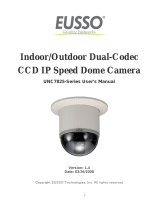
Viewing System Setup............................................................................................................................................... 25
System Setup details..................................................................................................................................................25
System BIOS.................................................................................................................................................................25
iDRAC Settings utility................................................................................................................................................. 49
Device Settings............................................................................................................................................................50
Dell Lifecycle Controller...................................................................................................................................................50
Embedded systems management............................................................................................................................50
Boot Manager.................................................................................................................................................................... 50
Viewing Boot Manager................................................................................................................................................51
Boot Manager main menu.......................................................................................................................................... 51
PXE boot............................................................................................................................................................................. 52
Chapter 6: Installing and removing blade components................................................................. 53
Safety instructions............................................................................................................................................................53
Before working inside your system......................................................................................................................... 53
After working inside your system............................................................................................................................ 54
Recommended tools......................................................................................................................................................... 54
Removing and installing a blade.....................................................................................................................................54
Removing the blade.................................................................................................................................................... 54
Installing a blade.......................................................................................................................................................... 56
System cover......................................................................................................................................................................57
Removing the system cover..................................................................................................................................... 57
Installing the system cover....................................................................................................................................... 58
Inside the blade..................................................................................................................................................................60
Cooling shroud................................................................................................................................................................... 60
Removing the cooling shroud...................................................................................................................................60
Installing the cooling shroud...................................................................................................................................... 61
System memory.................................................................................................................................................................62
General memory module installation guidelines....................................................................................................64
Mode-specific guidelines........................................................................................................................................... 65
Sample memory configurations................................................................................................................................66
Removing memory modules...................................................................................................................................... 68
Installing memory modules........................................................................................................................................ 69
I/O module mezzanine cards...........................................................................................................................................71
Mezzanine card installation guidelines.................................................................................................................... 71
Removing a mezzanine card......................................................................................................................................71
Installing a mezzanine card....................................................................................................................................... 72
Mezzanine card support bracket...................................................................................................................................74
Removing the mezzanine card support bracket.................................................................................................. 74
Installing the mezzanine card support bracket.................................................................................................... 75
Internal dual SD module (optional)................................................................................................................................76
Replacing an SD card..................................................................................................................................................77
Internal USB key.......................................................................................................................................................... 78
Removing the IDSDM card........................................................................................................................................79
Installing the IDSDM card..........................................................................................................................................80
rSPI card (optional).......................................................................................................................................................... 82
Removing the optional rSPI card.............................................................................................................................82
Installing the optional rSPI card............................................................................................................................... 83
SD vFlash card................................................................................................................................................................... 84
Replacing the SD vFlash card...................................................................................................................................84
4
Contents





















